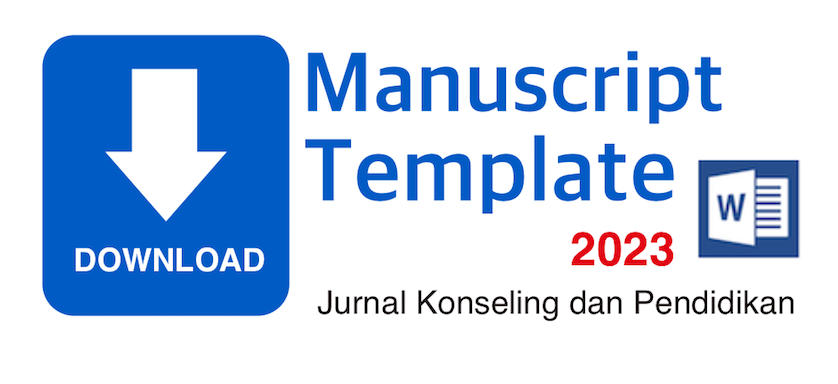Student Perception of "A" Fighting Workshop for Digital Information Technology (Digital Technology) Program PSMZA
 ), Noor Rulhanim Binti Mohamad Ariffin(2),
), Noor Rulhanim Binti Mohamad Ariffin(2), (1) Politeknik Sultan Mizan Zainal Abidin, Malaysia
(2) Politeknik Sultan Mizan Zainal Abidin, Malaysia
 Corresponding Author
Corresponding Author
DOI : https://doi.org/10.29210/128100
Full Text:
 Language : en
Language : en
Abstract
Programme of study Diploma in Information Technology (DDT) provides education and training in the field of computing with specific emphasis on the areas of Information Technology. In order to ensure technology development in line with the needs of industry, Department of Polytechnic Education (JPP) have checked the curriculum Diploma of Information Technology (Digital Technology). Curriculum Diploma of Information Technology (Digital Technology) has set a 40% as a pass score for Discrete Mathematics course (DBM2033) in the assessment of coursework and final examination. However, students who take courses in Discrete Mathematics (DBM2033) is weak in terms of calculation and this resulted in their results less impressive in this course. This continuity, a Bengkel Gempur “A” for the Diploma of Information Technology (Digital Technology) was implemented. This research in the form of surveys and applying data obtained from the questionnaire. The samples consist of 54 semester two students who take courses in Discrete Mathematics (DBM2033) for session June 2017. Pilot study of reliability value α = 0.930. The findings of this study show the level of students ' perception of Bengkel Gempur “A” are at a high level and students have a positive perception after following the workshop. However, the findings show there is no difference in perception among the students based on the demographics of the respondents, i.e. gender, race, age, education status and cumulative grade points average (CGPA). Students ' perception on the Bengkel Gempur “A” has changed since joining the program. This has proved through score mean before the programme was 2.28 and mean score after participating in the programme was 2.96 which increased by 0.68. This study demonstrated that the implementation of Bengkel Gempur “A” has managed to increase the level of student achievement onfinal examination sessions June 2017.
Keywords
References
Abu Bakar, Z., & Ismail, N. H. A. (2011). Persepsi Dan Sikap Pelajar Terhadap. Persepsi Dan Sikap Pelajar Terhadap Pendekatan Konstruktivisme Serta Kesan Terhadap Pencapaian Dalam Mata Pelajaran Matematik Di Fakulti Pendidikan Universiti Teknologi Malaysia Zainudin, 3(December 2010), 2–9.
Ahmad, S. F., & Tamuri, A. H. (2010). Persepsi Guru Terhadap Penggunaan Bahan Bantu Mengajar Berasaskan Teknologi Multimedia dalam Pengajaran j-QAF. Journal of Islamic and Arabic Education, 2(2), 53–64.
Azizi Yahaya, Shahrin Hashim, Jamaludin Ramli, Yusof Boon & Abdul Rahman (2007). Menguasai penyelidikan dalam pendidikan. Universiti Teknologi Malaysia: PTS Profesional.
Ch’ng, L. K. (2017). No Title. Kesan Aktiviti Hands-On Terhadap Minat Dan Pencapaian Murid Tahun Empat Dalam Topik Sifat Bahan Di Kuching, 19. Retrieved from http://www.ipbl.edu.my/portal/penyelidikan/BukuKoleksi/2017/SN/CH%27NG LEE KHENG/ARTIKEL_KAJIAN_TINDAKAN.pdf
Cohen, L.., Manion, L.., & Morrison, K. (2011). Research Methods In Education (7th ed,. Vol. 55). New York: Routledge. http://doi.org/10.1111/j.1467-8527.2007.00388_4.x
Derani, R. (2004). Persepsi Ibu Bapa Terhadap Faktor-Faktor Keruntuhan Akhlak Remaja Islam Masa Kini: Satu Tinjauan Di Taman Aman Anak Bukit, Alor Setar Kedah.,131.Retrievedfromhttp://www.fp.utm.my/epusatsumber/pdffail/ptkghdfwp2/p_2004_5758_5524fd02a33545bb98e6b186be8904e7.pdf
Gardiner, W.L. (1989). Forecasting, Planning anf the future ofinformation society. Dlm. High technology workplace:Integrating technology, management and design for productive work environments, Goumain, P. (Ed.). 27-39.New York: Van Nostand Reinhold
Ghani Hj Talib, (1996). Pembinaan Instrumen: Ceramah Kursus Penyelidikan Pendidikan, Anjuran Bahagian Pendidikan Guru, Kementerian Pendidikan Malaysia, 12-13 Ogos 1996.
Kelly, Rob Roy.(2000) Students Teachers.http://www.rit.edu/~rkelly/html/03_ped/ped_stu1.html
Linacre, J. M. (1994). Sample size and item calibration stability. Rasch Measurement Transactions, 7, 328.
Mohammad, S. H., & Mohd Roslan, N. S. (2017). Tahap Kebimbangan Matematik Dan Hubungannya Dengan Pencapaian Pelajar Di Politeknik
Muadzam Shah, Pahang. TAHAP KEBIMBANGAN MATEMATIK DAN HUBUNGANNYA DENGAN PENCAPAIAN PELAJAR DI POLITEKNIK MUADZAM SHAH, PAHANG, 1–11.Retrievedfromhttp://www.fp.utm.my/epusatsumber/pdffail/ptkghdfwp2/p_2006_6741_87453835a596431a89bd14c15a724c5e.pdf
Mohd. Najib Abdul Ghafar (2003). Rekabentuk tinjauan soal selidik pendidikan. Johor Bahru: UMIDAINDUSTRIES Sdn.Bhd
Mohd. Najib Abd Ghaffar (1999). Penyelidikan pendidikan. Skudai: Penerbit Akademik Universiti Teknologi Malaysia.
Nasrah Binti Said (2012). Tahap Kepimpinan Instruksional Dalam Kalangan Pensyarah Politeknik Di Negeri Terengganu. Universiti Utara Malaaysia
Norziah Othman, Effandi Zakaria &Zanaton Iksan. (2014).Nilai Dalam Pengajaran Matematik Di Institusi Pengajian Tinggi. e-Jurnal Penyelidikan dan Inovasi KUIS
Jilid 1(II): 56-68.
Office of Institutional Effectiveness & Analysis, Florida Atlantic University.(2002).Student Perception of Teaching. http://www.fau.edu/projects/spot/instructor.php 9
Renga, S., & Dalla, L. (1993). Affect: A critical component of mathematical learning in early childhood. In R.J. Jensen (Ed.). Research ideas for the classroom: Early childhood mathematics (pp. 22-39).New York: Macmillan.
Scarpello, G. (2007). Helping Students Get Past Mathematics Anxiety,
Connecting education and careers, 82(6), 34-35
Seymour, Elaine dan Gutwill, Joshua. (2000),“Student Perception ofLearning Gain”http://newtraditions.chem.wisc.edu/Flag/pages/Complete/ProcessTools/MC2Gain s_srvy.htm - Top
Wan Kamarudin, W. A. Z. (2014). Volume 3 Issue 1 2014 Academia Journal UiTMT (http://journale-academiauitmt.edu.my/) 62, 3(1), 62–67. Retrieved from http://journaleacademiauitmt.uitm.edu.my/v2/images/vol4issue12015/Article_03_Volume_4_Issue1_2015.pdf
Zeynivandnezhad, F., Ismail, Z., & Yusof, Y. M. (2012). Mathematics Requirements for Vocational and Technical Education in Iran. Procedia - Social and Behavioral Sciences, 56(Ictlhe), 410–415.https://doi.org/10.1016/j.sbspro.2012.09.670
 Article Metrics
Article Metrics
 Abstract Views : 819 times
Abstract Views : 819 times
 PDF Downloaded : 134 times
PDF Downloaded : 134 times
Refbacks
- There are currently no refbacks.



